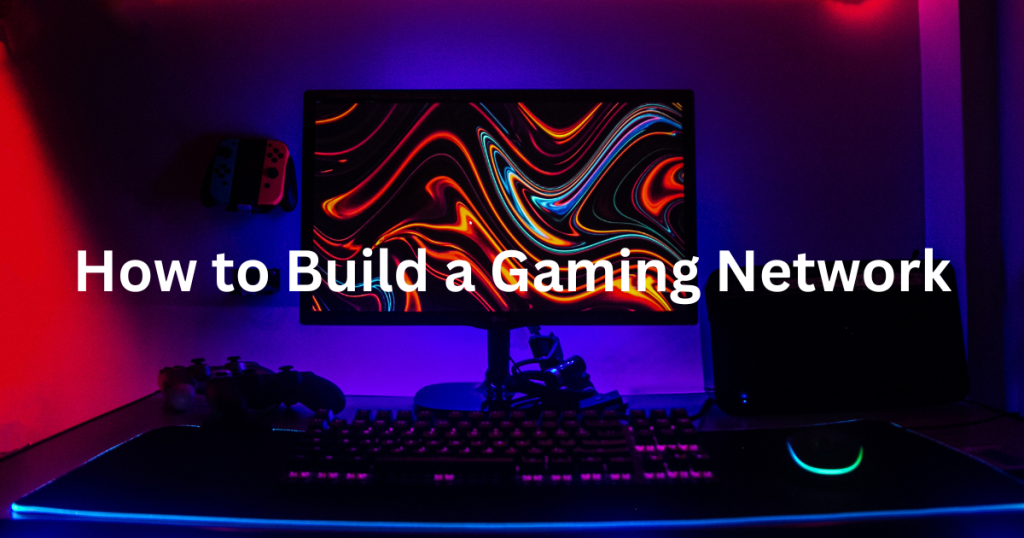
Building a gaming network is crucial for a seamless online gaming experience. Whether you’re setting up a home network for personal use or a dedicated server for multiplayer gaming, optimizing your connection can make a huge difference. In this guide, we’ll walk through the essential steps to create a gaming network that delivers high performance, low latency, and top-notch security.
Understanding Gaming Networks
A gaming network consists of interconnected devices that allow players to connect and communicate in real-time. This can be as simple as a home network with a gaming PC and a console or as complex as a dedicated server hosting online multiplayer games. The goal is to ensure smooth data transmission with minimal lag.
Choosing the Right Hardware
To build an efficient gaming network, investing in the right hardware is essential. This includes gaming routers with high-speed capabilities, quality Ethernet cables, powerful network switches, and reliable gaming PCs or consoles. A strong hardware foundation ensures stability and low latency during gameplay.
Setting Up a Reliable Internet Connection
A stable and fast internet connection is the backbone of any gaming network. Choose an internet service provider (ISP) that offers high-speed, low-latency plans. Fiber-optic connections are preferred for gaming due to their minimal lag and high bandwidth.
Configuring Your Network for Gaming
Proper network configuration ensures an optimized gaming experience. This includes setting up Quality of Service (QoS) on your router to prioritize gaming traffic, opening necessary ports for specific games, and reducing network congestion by limiting background applications.
Using Wired vs. Wireless Connections
A wired connection using Ethernet cables provides a more stable and faster connection compared to Wi-Fi. However, if you must use Wi-Fi, ensure you’re on a 5GHz band, minimize interference, and position your router optimally for the best signal strength.
Setting Up a Dedicated Gaming Server
For multiplayer gaming, setting up a dedicated server can offer better performance, reduced lag, and a controlled gaming environment. This involves choosing a powerful server machine, configuring server settings, and ensuring a strong network connection to handle multiple players.
Optimizing Network Performance
Regularly optimizing your network is essential to maintain gaming performance. This includes updating firmware, clearing cache, monitoring bandwidth usage, and using network monitoring tools to detect and fix bottlenecks.
Managing Latency and Ping Issues
High latency and ping can ruin an online gaming experience. Reduce latency by connecting to the closest game servers, using a wired connection, and eliminating background applications that consume bandwidth.
Security Measures for a Gaming Network
Protecting your gaming network from cyber threats is crucial. Use strong passwords, enable firewall protection, regularly update your router firmware, and avoid connecting to unsecured networks to prevent hacks and DDoS attacks.
Using VPNs for Gaming
A VPN can enhance privacy and security while gaming, but it may also impact speed. Choose a gaming-friendly VPN with low-latency servers to bypass geo-restrictions while maintaining fast connections.
Cross-Platform Compatibility Considerations
If you’re playing across different platforms (PC, console, mobile), ensure your network supports cross-play without performance issues. This might involve configuring NAT settings and ensuring stable connectivity across devices.
Also Read: How Much Data Does Online Gaming Use
Building a Community Around Your Gaming Network
For those creating a public gaming network, building a strong community is important. Use forums, social media, and voice chat services like Discord to connect with other gamers and enhance the multiplayer experience.
Troubleshooting Common Network Issues
Network issues like lag spikes, disconnections, and slow speeds can be frustrating. Troubleshoot by restarting your router, checking for firmware updates, diagnosing network congestion, and running speed tests to pinpoint issues.
Conclusion
Creating a gaming network requires careful planning and optimization. By choosing the right hardware, configuring your network settings, and ensuring strong security, you can build a high-performance gaming network that provides an immersive and lag-free experience.
